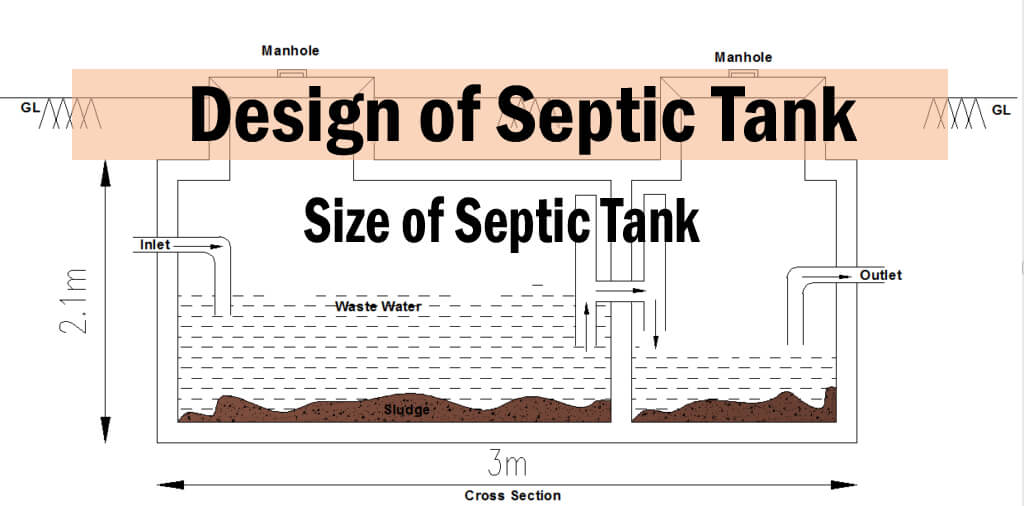Factors Influencing Septic Tank Size

The size of a septic tank is a crucial factor in ensuring proper wastewater treatment and disposal. Determining the right tank size is essential to prevent overflows, backups, and environmental contamination. Several factors influence the size of a septic tank, including household size, water usage patterns, type of dwelling, and local regulations.
Household Size, What size septic tank for 3 bedroom house
The number of people living in a home directly impacts the amount of wastewater generated. Larger households produce more wastewater, requiring a larger septic tank to accommodate the increased volume. A 3-bedroom house typically accommodates a family of 4-6 people. However, if the house is occupied by a larger family or multiple families, a larger septic tank may be necessary.
Water Usage Patterns
Water usage patterns also influence septic tank size. Homes with high water usage, such as those with frequent showers, baths, laundry loads, or outdoor irrigation, will require a larger tank. For example, a home with a swimming pool or a large garden with regular watering will generate more wastewater than a home with minimal outdoor water use.
Types of 3-Bedroom Homes
The type of 3-bedroom home also affects septic tank size. Single-family homes generally require smaller tanks compared to duplexes or townhouses. Duplexes and townhouses have multiple dwelling units, generating more wastewater, and therefore requiring larger septic tanks.
Local Building Codes and Regulations
Local building codes and regulations play a significant role in determining septic tank size. These codes specify minimum tank sizes based on factors such as household size, water usage, and soil conditions. It is crucial to consult with local authorities to ensure compliance with regulations.
Average Septic Tank Sizes for Different Household Sizes
| Household Size | Average Septic Tank Size (Gallons) |
|---|---|
| 1-2 people | 750-1000 |
| 3-4 people | 1000-1500 |
| 5-6 people | 1500-2000 |
| 7-8 people | 2000-2500 |
It is important to note that these are just average recommendations. The actual septic tank size may vary depending on specific factors such as water usage, soil conditions, and local regulations.
Septic Tank Sizing Calculations

Calculating the appropriate size for a septic tank is crucial for ensuring efficient wastewater treatment and preventing environmental contamination. The size of the septic tank is directly related to the volume of wastewater generated by the household.
Estimating Daily Wastewater Flow
To determine the appropriate septic tank size, you need to estimate the daily wastewater flow. This can be done by considering the number of people in the household and their average daily water usage.
A common approach is to use the following formula:
Daily Wastewater Flow (gallons) = Number of People in Household x Average Daily Water Usage per Person (gallons)
The average daily water usage per person can vary depending on factors such as lifestyle, climate, and water conservation efforts. A typical range is 75 to 150 gallons per person per day.
For example, a three-bedroom house with four people could have an estimated daily wastewater flow of:
Daily Wastewater Flow = 4 people x 100 gallons/person = 400 gallons
Septic Tank Sizing Formula
Once you have estimated the daily wastewater flow, you can use a standard formula to calculate the minimum septic tank size:
Septic Tank Size (gallons) = Daily Wastewater Flow (gallons) x Holding Time (days)
The holding time is the amount of time wastewater is allowed to remain in the tank before being discharged to the drain field. This time is typically 24 to 48 hours, depending on local regulations and soil conditions.
Using the example above, with a holding time of 36 hours (1.5 days), the minimum septic tank size would be:
Septic Tank Size = 400 gallons x 1.5 days = 600 gallons
Adjusting Septic Tank Size for Local Regulations and Soil Conditions
The calculated septic tank size may need to be adjusted based on local regulations and soil conditions.
* Local Regulations: Many jurisdictions have minimum septic tank size requirements that may exceed the calculated size. For example, a local ordinance might require a minimum septic tank size of 1,000 gallons for a three-bedroom house, regardless of the calculated size.
* Soil Conditions: The type of soil can also influence septic tank size. Well-drained soils allow for faster wastewater infiltration, which may allow for a smaller septic tank. Conversely, poorly drained soils may require a larger septic tank to accommodate slower infiltration rates.
Key Parameters in Septic Tank Sizing Calculations
| Parameter | Units | Typical Values |
|—|—|—|
| Number of People in Household | | 2-6 |
| Average Daily Water Usage per Person | gallons/person | 75-150 |
| Daily Wastewater Flow | gallons | 150-900 |
| Holding Time | days | 1.5-2 |
| Minimum Septic Tank Size | gallons | 500-1500 |
Considerations for Septic Tank Installation and Maintenance: What Size Septic Tank For 3 Bedroom House

Proper installation and regular maintenance are crucial for ensuring the longevity and optimal performance of your septic system. A well-maintained septic tank can prevent costly repairs and environmental hazards, while a poorly installed or neglected system can lead to backups, foul odors, and potential contamination of groundwater.
Septic Tank Installation
Proper installation of a septic tank is critical for its long-term performance and efficiency. This involves selecting the right location, ensuring adequate drainage, and properly connecting the tank to the house plumbing and leach field.
Importance of Proper Installation
A properly installed septic tank ensures efficient wastewater treatment and prevents problems like:
* Backups: Improper installation can lead to sewage backups in your home, causing unpleasant odors and potential health risks.
* Leach Field Failure: Incorrectly installed drainage lines or a poorly designed leach field can result in sewage overflowing into the surrounding soil.
* Groundwater Contamination: A malfunctioning septic system can contaminate groundwater, posing a serious threat to public health and the environment.
Types of Septic Tank Materials
Septic tanks are typically constructed from various materials, each with its own set of advantages and disadvantages:
| Material | Advantages | Disadvantages |
|—|—|—|
| Concrete | Durable, long-lasting, and resistant to corrosion | Heavy and difficult to move, susceptible to cracking |
| Fiberglass | Lightweight, easy to install, and resistant to corrosion | Less durable than concrete, prone to damage from impact |
| Polyethylene | Lightweight, durable, and resistant to corrosion | Can be susceptible to damage from extreme temperatures |
Septic Tank Maintenance
Regular maintenance is essential for keeping your septic system functioning properly. This includes pumping, inspecting, and cleaning the tank at recommended intervals.
Best Practices for Septic Tank Maintenance
* Regular Pumping: The frequency of pumping depends on the size of the tank, the number of occupants, and the amount of wastewater generated. It’s generally recommended to pump your septic tank every 3-5 years.
* Inspection: Regular inspection by a qualified professional is crucial for identifying potential problems early on. This typically involves examining the tank for cracks, leaks, and other signs of damage.
* Cleaning: Cleaning the septic tank involves removing accumulated sludge and scum. This can be done by a professional or with specialized equipment.
Common Septic Tank Problems and Troubleshooting Tips
* Slow Drains: This can indicate a blockage in the drain lines, a full septic tank, or a failing leach field.
* Foul Odors: A strong sewage odor inside your home or around the septic tank can indicate a leak, a full tank, or a malfunctioning leach field.
* Backups: This is a serious problem that can result from a blocked drain line, a full septic tank, or a failing leach field.
* Gurgling Sounds: Gurgling sounds from drains can indicate a blockage or a problem with the vent pipe.
* Seeping Sewage: This indicates a leak in the tank or the drain lines.
Septic Tank Maintenance Schedule
The frequency of septic tank maintenance tasks varies based on household size and usage patterns. The following table provides a general guideline:
| Household Size | Pumping Frequency | Inspection Frequency |
|—|—|—|
| 1-2 People | Every 5 years | Every 2 years |
| 3-4 People | Every 3-4 years | Every year |
| 5+ People | Every 2-3 years | Every 6 months |
What size septic tank for 3 bedroom house – The size of a septic tank for a 3-bedroom house depends on the number of occupants and water usage. Consider factors like shower frequency and laundry habits to determine the appropriate capacity. And while you’re tackling home improvements, don’t forget the importance of storage.
Wooden bathroom storage shelves can add a touch of elegance while maximizing space, a perfect complement to your new septic system. Remember, a well-maintained septic system is essential for a healthy home environment.
Determining the right septic tank size for a 3 bedroom house depends on factors like occupancy and water usage. While a typical family might need a larger tank, those seeking a more nomadic lifestyle might consider a 3 bedroom fifth wheel as an alternative.
For these mobile homes, waste management systems are different, but the principle of balancing capacity with usage still applies.